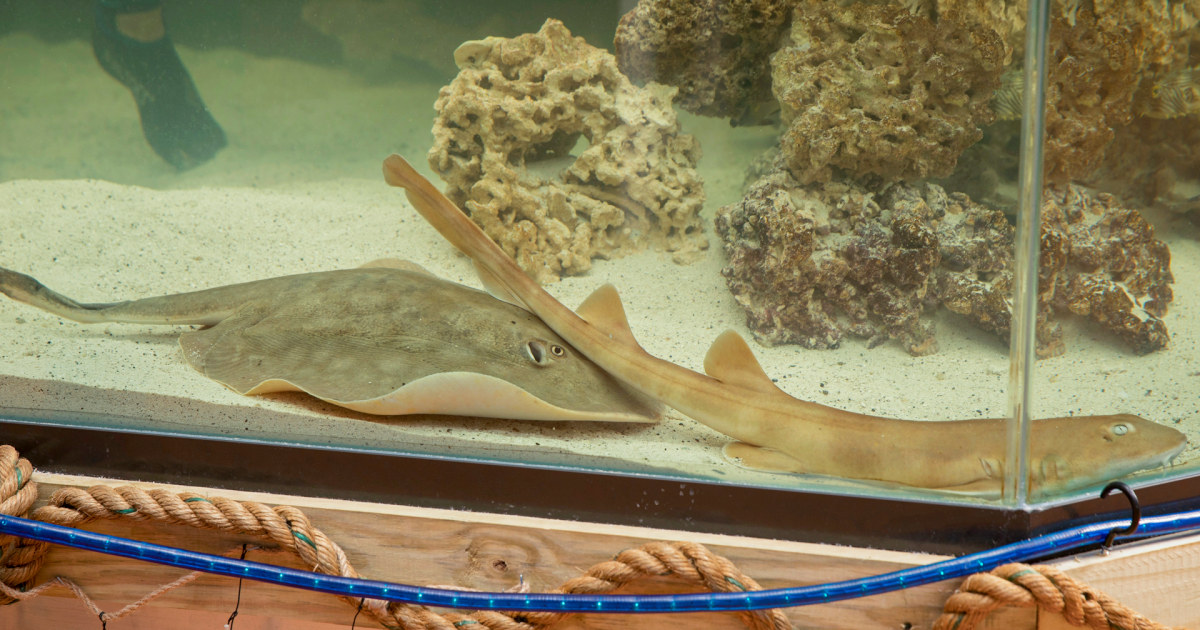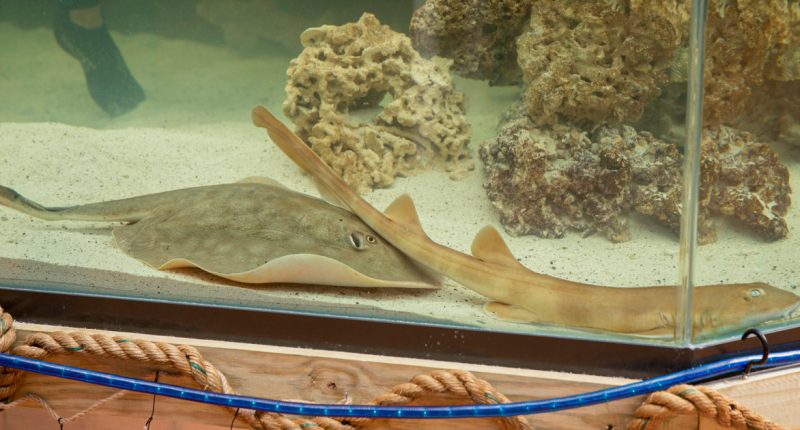
The surprise pregnancy of Charlotte, a stingray living in a tank without any male rays, has captivated people across the world and stirred a sudden interest in parthenogenesis, a scientific term that essentially means virgin birth.
Speculation about the stingray has racked up more than 12 million views for a TikToker. The talk show host Jimmy Kimmel weighed in on Charlotte’s apparent immaculate conception with a segment about the ray, which resides at the Aquarium & Shark Lab, in Hendersonville, North Carolina.
While a virgin birth sounds like a rare event, experts on parthenogenesis said Charlotte has performed a miracle of life far more common than most people understand. Dozens of species — zebra sharks, California condors and Komodo dragons — can reproduce asexually through parthenogenesis. Scientists have only started to unravel the mysteries of this phenomenon, and a better understanding of the process could help them harness its power for conservation.
“There’s nothing unnatural about asexual reproduction,” said Mercedes Burns, a biologist at the University of Maryland, Baltimore County, who studies sexual conflict in animals. “Invertebrates or fishes are doing amazing things in their lifetimes in order to reproduce successfully.”
The frenzy over Charlotte’s baby bump began earlier this month, when the Aquarium & Shark Lab announced that the stingray was expecting, suggesting on social media that she’d been either impregnated by a shark that shares her cage or that she had developed pups through parthenogenesis.
Kevin Feldheim, a researcher at Chicago’s Field Museum who is a parthenogenesis expert, said the shark impregnation theory might have helped make Charlotte a media darling, but it has no basis in reality because they are such distant genetic relatives.
“The divergence between sharks and stingrays is 350 million years. And as comparison, the divergence between humans and platypus is 180 millions years,” he said. “The shark scientists were not really happy with that press release. No one would even think of that as an option.”
Once the ray gives birth to pups, researchers will have to evaluate the offspring and do genetic testing to confirm they’re the results of parthenogenesis, which is the only likely cause, Feldheim said. He added that confirmation will be important because elasmobranchs — a subclass of fish that includes rays, sharks and skates — can store viable sperm for several years in a special gland.
Scientists are only just beginning to understand how many species can perform parthenogenesis. He said the first convincing evidence of the phenomenon in sharks was published in 2007.
Feldheim said he’s counted 15 species of elasmobranchs where parthenogenesis has been observed by scientists since then.
The phenomenon has been observed in every class of animals, except for mammals, which have a mechanism that prevents parthenogenesis.
“Genes responsible for early stage development of zygotes have to come from both sperm and egg. If they’re only present in the egg, that zygote will arrest its development,” Burns explained, adding that mammals are “all in” on sexual reproduction.
The common form of parthenogenesis happens during meiosis, when gametes (the cells that create new organisms in sexual reproduction) are created. When eggs are produced, byproducts are created called polar bodies, which contain genetic information.
During spontaneous parthenogenesis, eggs fuse with polar bodies to create a new offspring without the genetic contribution of another parent.
The extent to which parthenogenesis exists in the wild remains unclear. It’s often observed in zoos, where it’s easier to spot because animals are separated from one another and often solitary.
“Females are held in aquariums around the world, oftentimes without a male, and if they started laying eggs, I‘m assuming aquariums would toss them, because they weren’t fertile,” Feldheim said. “It’s now being studied in a little more depth in a couple species around the world because we’ve started to know how it’s relatively common in a captive setting.”
The process could be playing out in wild animals with similar rates, but it’s much harder to detect.
Why vertebrates have developed the ability to reproduce asexually is a bit of mystery.
Researchers found a population of small tooth sawfish in Florida that’s just barely hanging on, Feldheim said. The researchers found several of the creatures were reproducing through parthenogenesis.
“This species is at much lower numbers than it has been in the past. It’s very possible those females couldn’t find a mate,” he said, which would make parthenogenesis a “backup way” to reproduce when pickings are slim.
But, the phenomenon has also been demonstrated in zebra sharks when mates were available.
Burns said it’s possible parthenogenesis is a response to environment feedback. It’s also possible it’s just a happy fluke of cell division and a reminder of how life can bring gifts of random chance and little explanation.
Source: | This article originally belongs to Nbcnews.com










